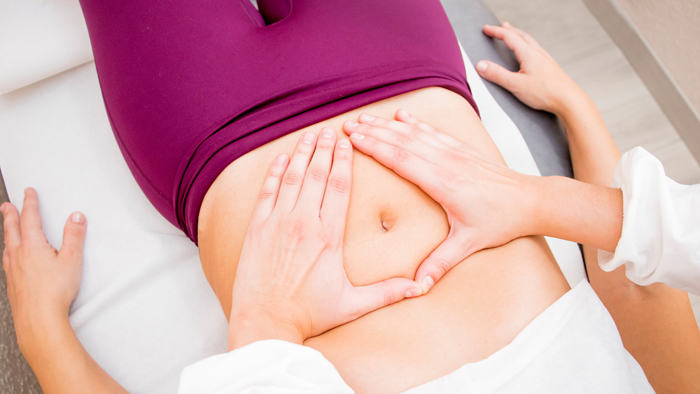Pelvic Floor Treatment & Diagnostics in Chunni Ganj, Kanpur
Pelvic Floor
The pelvic floor is also known as Pelvic Diaphragm. It is structured with muscle fibres of the levator ani and coccygeus muscles which is situated under the pelvis. Piriformis muscles and obturator internus muscles form the walls of the pelvis below which the pelvic floor is situated. The pelvic floor consists of the pelvic diaphragm, perineal membrane, and deep perineal pouch. The word pelvic diaphragm is often used interchangeably with the pelvic floor.
Structure of Pelvic floor
The pelvic diaphragm is a dome-shaped structure that consists of levator ani muscles and coccygeus muscles on each side. The structure at the anterior position consists of a U-shaped opening which is known as the urogenital hiatus which allows the urogenital apparatus to poster the pelvic floor into the perineal below. In the male, it is the passage of the urethra whereas in females it is the passage for the urethra as well as the vagina through the opening.

The 3 sets of levator ani fibre muscles include: -
- Pubococcygeus
- Puborectalis
- Iliococcygeus
Pubococcygeus which extended to the coccygeus at the back of the pelvis. Anterior fibres of the coccygeus loop around and lines the prostate in the case of males and the vaginal area in the case of females. These fibres are divided forming levator prostate in the ales and pubovaginalls in the females.
Puborectalis muscles form a sling around the lower end of the gastrointestinal tract. It combines from the left and right sides of the pelvis behind the anorectal junction. They originate on the pubis and have the important function of maintaining the anorectal angle.
The third posterior fibre muscles of levator ani are iliococcygeus muscles. They are also present on both the left as well as the right side of the pelvis. Coccygeus is situated at the posterior of the pelvic region consists of muscular tendons which originate from the ischial spine to the lateral margin of the coccyx and sacrum.
These muscles form the bulk of the pelvic diaphragm. The pubococcygeus which is the main part of the levator ani may get broken or damaged in females at the time of childbirth. Because of the birth canal present in females, a pelvic cavity in females is usually wider and larger than in males.
The pelvic floor also consists of a perineal membrane and deep perineal pouch. Inferior to the pelvic diaphragm there is a membrane situated which is known as a perineal membrane. It is a triangular-shaped thick facial structure that attaches along
the pubic arch whereas at the back there are free posterior borders that are not attached to anything.
This membrane provides attachment for the roots of the external genitalia. It also consists of two holes- Urethral Orifice and Vaginal Orifice in females whereas, in males, there is only the Urethral Orifice.
Deep Perineal Pouch is a facial capsule that lies above the perineal membrane, it contains several layers of skeletal muscles that differ in males and females.
Functions of Pelvic Floor
There are some basic yet important functions of the pelvic floor that includes: -
- The pelvic floor is a bunch of fibre muscles that protect the opening of your bladder and rectum. Whenever there is extra pressure during a cough or sneezing, these muscles contract that prevents extra leakage from the urethra and anus.
- These muscles provide support to your pelvic organs against gravity and in case of extra pressure on the abdominal area.
- As these muscles are attached to the pelvis and hip bone, they form the important part of your core that provides stability to your pelvic area.
- Pelvic floor fibre muscles function as the blood and lymph pump for your pelvis. The absence of this pump system can lead to swelling and bulging of the pelvic area.
Exercises for Pelvic Floor
Due to the important function the Pelvic floor provides your body, it is important to keep your pelvic floor active and healthy. There are some scientifically-proven exercises that you must practice to keep your pelvic region strong and healthy.
- Kegel exercise aims at tightening the pelvic muscles by keeping the muscles active and intact.
- Squeeze and Release of pelvic muscles also help in tightening and strengthen the pelvic muscles. This rapid movement makes the pelvic muscles respond quickly.
- The bridge pose helps to strengthen the core and pelvic area by providing strength to the buttocks and abdominal area.
- Squats help the pelvic area to tighten and provide core strength activating pelvic fibre muscles.
Conclusion
The pelvic, floor structure is the core of your body. It is important to keep your pelvic region active and strong. Practising postures and regular exercise with a proper healthy diet can do wonders in building up your core.
Apart from exercising, good postures can also help in enhancing the strength of your pelvic area. It is the most important part of your body. You should take precautionary steps to keep your core healthy and fit.
Request an appointment at Apollo Spectra Hospitals, Kanpur
Call 1860-500-2244 to book an appointment
It has been seen practising postures and exercising regularly helps the pelvic region to build strength and tightness. Muscle fibres remain active and can give a quick response to all the activities.
The person who has a weak pelvic region should avoid some exercises at first as your pelvis is not used to work actively. Some of the exercises like lifting heavy weights, sit-ups adding weights to your body weight, or any high-impact physical activities.
Symptoms
Our Top Specialities
NOTICE BOARD
CONTACT US
CONTACT US
 Book Appointment
Book Appointment


.svg)
.svg)
.svg)
.svg)








